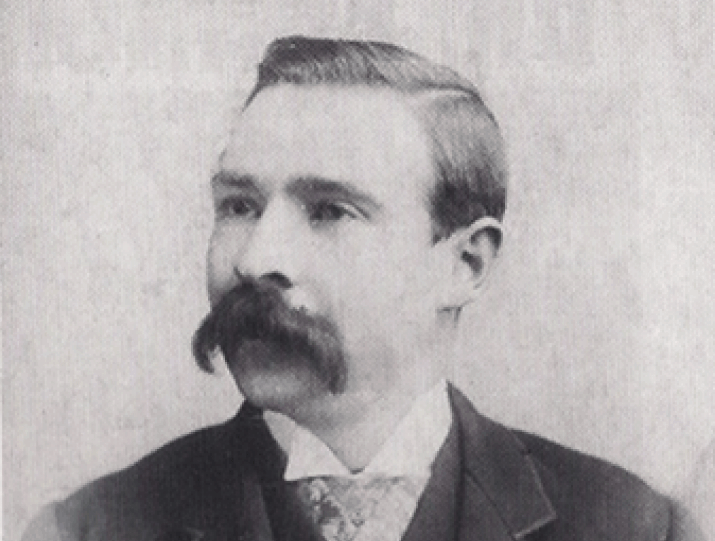Francis Tumblety: A Quack Doctor Who Became A Jack The Ripper Suspect

Public DomainFrancis Tumblety, a “quack” doctor with a previous arrest record.
Who was he?
Francis Tumblety had a mysterious past, though it’s likely that this was an intentional choice as he benefitted greatly from keeping much about his life secret. Some accounts say he was born in Ireland, others in Canada, but in any case, his family eventually moved to Rochester, New York, sometime around 1844.
Neighbors and acquaintances described the young Tumblety as “a dirty, awkward, ignorant, uncared-for, good-for-nothing boy… utterly devoid of education.” Despite this, Tumblety did quite well for himself in the 1850s, claiming to be an “Indian herb doctor.” By 1857, he had found his way to Montreal, Canada.
Though he initially became a prominent member of the community, he was eventually arrested on September 23, 1857 for attempting to provide an abortion to a local prostitute. He managed to avoid a trial, however, but found himself facing trouble again a couple of years later in Saint John when a patient of his died from medication he had prescribed. In response, he soon fled town.
From there, Tumblety traveled to various places in the United States in a military outfit, claiming to be a soldier of high rank. Once the Civil War broke out, Tumblety claimed to be friends with the likes of President Lincoln and General Grant while establishing for himself a reputation as a misogynist with a strong hatred for women, especially prostitutes.
After an incident in St. Louis that led to his accidental arrest — he used the pseudonym J.H. Blackburn, not knowing that a warrant had been issued for the arrest of a Dr. L.P. Blackburn — Tumblety left the United States for London, where he soon ran into more trouble with the law.
Why is he a Jack the Ripper suspect?
Tumblety’s chosen profession — a fake doctor, that is, or a con artist by other terms — courted controversy wherever he went. In London, he was arrested in November 1888 for “gross indecency” and “indecent assault with force and arms” against four men.
The charges were euphemisms for homosexual activities, though it’s unclear whether he actually raped anyone or if he was targeted for consensual relationships, which would have also been considered illegal at that time. The bigotry of the era could have played a role as to why he was seen as a potential Jack the Ripper suspect.
However, Tumblety himself was known to be bigoted against women — especially “fallen” women — and allegedly collected specimens of uteri of “every class of women.” Chillingly, this would speak to an interest in human anatomy, something he and the Ripper would have in common. And Tumblety eventually drew attention for his possible connection to the Whitechapel murders, as he happened to be free on bail when the last murder occurred.
If we consider the five known murders of Jack the Ripper, then the crimes stopped after Tumblety fled England in late November 1888. But although authorities in London were aware of his whereabouts — he relocated to New York City and then Rochester before dying in St. Louis in 1903 — he was never extradited.
Does the case against him hold up?
To some degree.
The theory about Tumblety’s potential identity as Jack the Ripper really took off in the 1990s, when crime historian Stewart P. Evans purchased correspondence that belonged to journalist George Sims. This correspondence included a 1913 letter by Chief Inspector John Littlechild, in which Littlechild wrote, “…amongst the suspects, and to my mind a very likely one, was a Dr T [who] was an American quack named Tumblety.”
This inspired Evans to thoroughly research this suspect, and he and Paul Gainey later published a book about Tumblety titled Jack the Ripper: First American Serial Killer.
Aside from the Littlechild letter, Evans and Gainey laid out a convincing argument that they’d uncovered Jack the Ripper’s identity: Tumblety hated prostitutes, he likely had anatomical knowledge, he was in London at the time of the known Ripper murders and left after the last one, and some of his own acquaintances apparently believed that he was the Ripper.
That said, much of the evidence against Tumblety amounts to hearsay. And even Littlechild seemed to have his doubts about whether he was really a serial killer, as he was “not known as a Sadist” and there was no hard evidence that he was ever physically violent.
Finally, the Metropolitan Police likely did not consider him a viable suspect in the murders. If they had, they probably would not have released him on bail. And they probably would have jumped at the chance to extradite him from New York.





